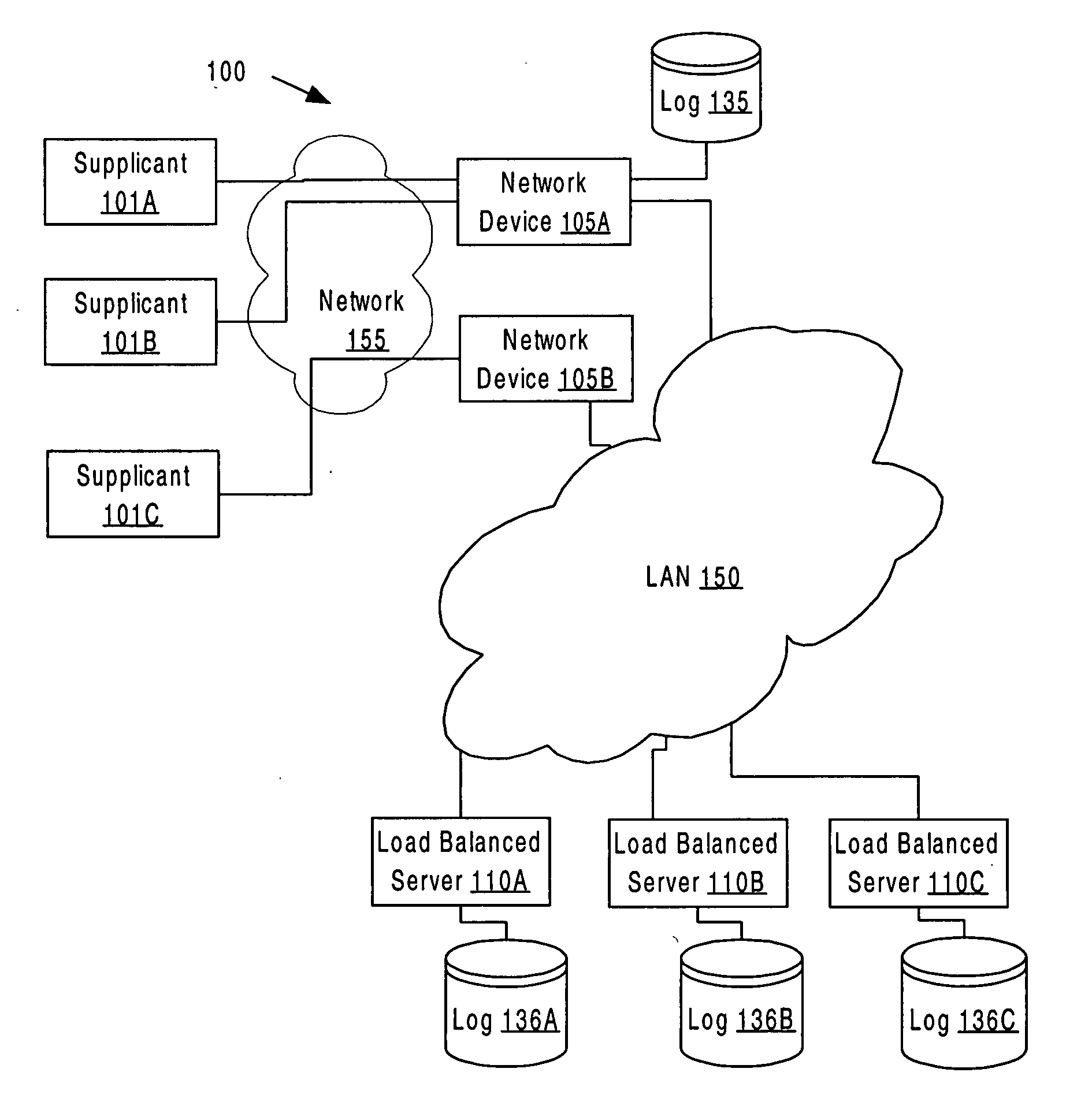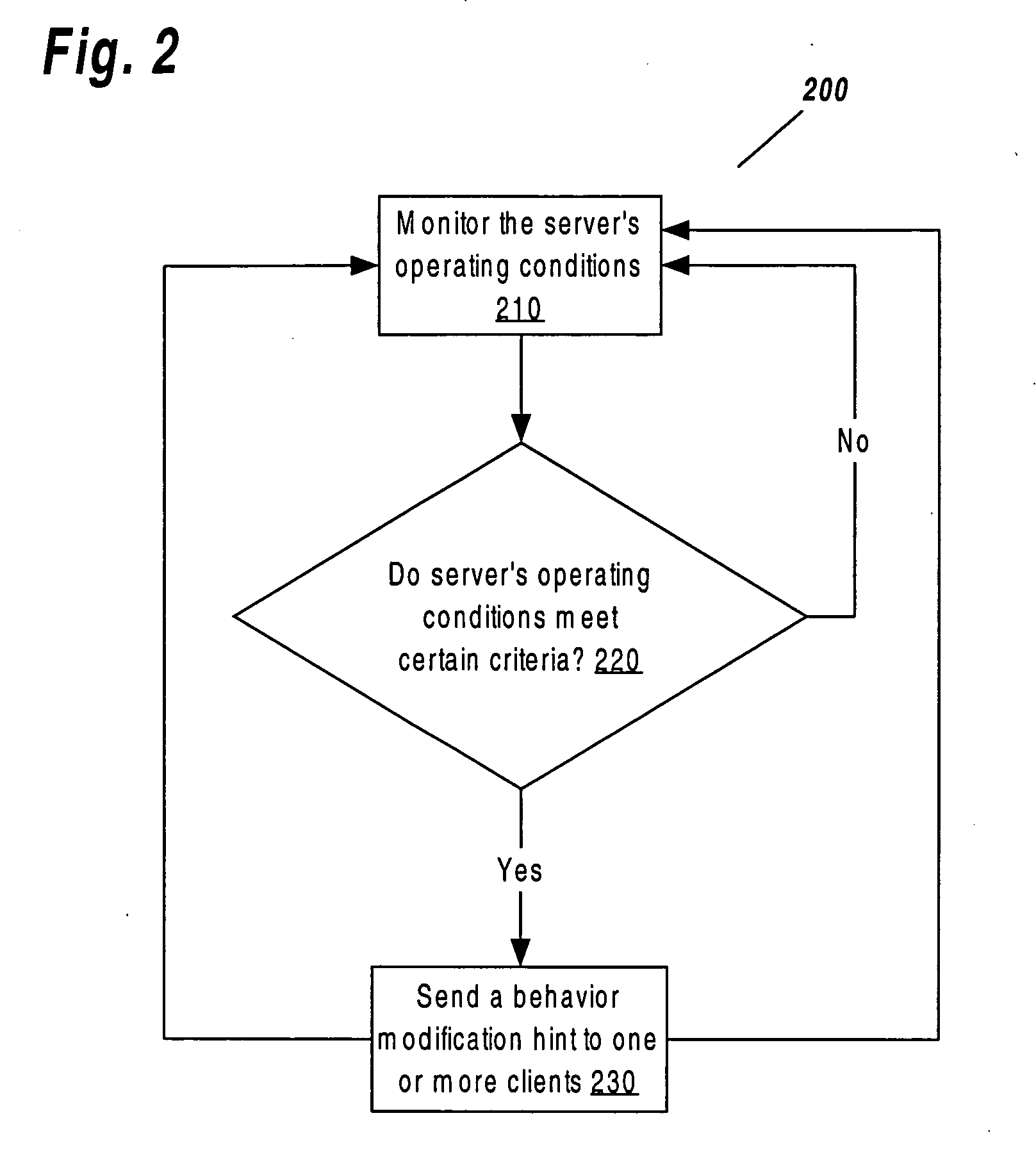Adaptive load balancing
a load balancing and load technology, applied in the field of load balancing servers, can solve the problems of poor or failed service at each of its clients, single point of failure is unacceptable, client can failover to another server providing the same service,
- Summary
- Abstract
- Description
- Claims
- Application Information
AI Technical Summary
Benefits of technology
Problems solved by technology
Method used
Image
Examples
Embodiment Construction
[0019] A method and apparatus for adaptive load balancing is described. In the following description, for the purposes of explanation, numerous specific details are set forth in order to provide a thorough understanding of the present invention. It will be apparent to one with ordinary skill in the art, however, that the present invention may be practiced without these specific details. In other instances, well-known structures and devices are shown in block diagram form in order to avoid unnecessarily obscuring the present invention. [0020] 1.0 GENERAL OVERVIEW [0021] 2.0 STRUCTURAL OVERVIEW [0022] 3.0 FUNCTIONAL OVERVIEW [0023] 3.1 OPERATING CONDITIONS [0024] 3.2 DETERMINING WHEN TO SEND A BEHAVIOR MODIFICATION HINT [0025] 3.3 REACTING TO A BEHAVIOR MODIFICATION HINT [0026] 3.4 AN EXAMPLE EMBODIMENT OF ADAPTIVE LOAD BALANCING FOR AN AAA SERVER [0027] 3.5 FUNCTIONAL ARCHITECTURE [0028] 4.0 HARDWARE OVERVIEW [0029] 5.0 EXTENSIONS AND ALTERNATIVES
1.0 General Overview
[0030] The need...
PUM
 Login to View More
Login to View More Abstract
Description
Claims
Application Information
 Login to View More
Login to View More - R&D
- Intellectual Property
- Life Sciences
- Materials
- Tech Scout
- Unparalleled Data Quality
- Higher Quality Content
- 60% Fewer Hallucinations
Browse by: Latest US Patents, China's latest patents, Technical Efficacy Thesaurus, Application Domain, Technology Topic, Popular Technical Reports.
© 2025 PatSnap. All rights reserved.Legal|Privacy policy|Modern Slavery Act Transparency Statement|Sitemap|About US| Contact US: help@patsnap.com



